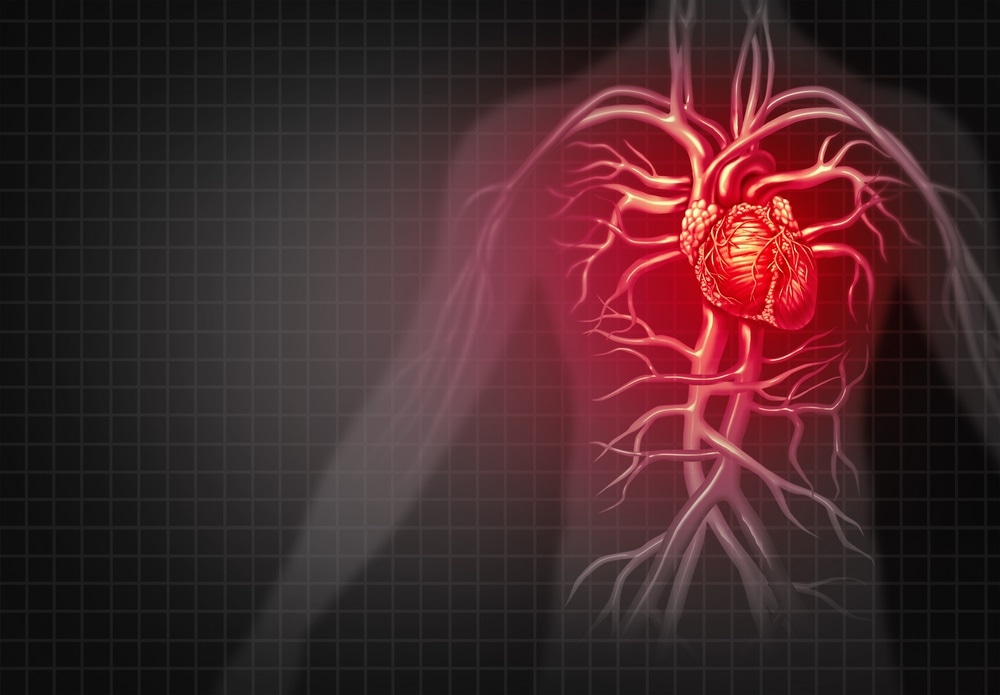
Older studies have shown a two-fold risk of stroke and heart attacks within the first six months post-diagnosis of cancer. Most cancers are associated with a higher risk of blood clots, within the deep veins of the limbs and in the lungs, as well within the arteries, which may account for this increased risk. Moreover, death within 30 days of a CVD event is 1.5 times greater in a patient with cancer than one without.
The study
To arrive at this conclusion, the researchers looked at more than 3.2 million American cancer patients over the period 1973 to 2012. They were interested in tracing the mortality in this group compared to the general population.The data they used was retrieved from the Surveillance, Epidemiology, and End Results (SEER) database. They explored the death data to isolate deaths due to CVD, including heart disease, high blood pressure, and cerebrovascular diseases such as stroke, arterial blocks, and aortic damage. They compensated for factors like ethnic origin, age, and sex, which could bias the results.
The findings
They obtained data on over 3.2 million cancer patients, among whom almost 40% died of cancer, while 11% died of CVD. They analyzed mortality data from a 40-year period, from patients with 28 different cancer types. This makes it the most wide-ranging and number-intensive study of its kind, as well as one with the longest duration.Highest risk
About 60 000 patients had breast cancer, and about 85 000 patients, prostate cancer - which is consistent with the rates of these cancers in the general population, making this a representative sample. However, in 2012, about 60% of patients who had cancer but died of CVD had breast, prostate, or bladder cancer. The following groups also had an above-average risk for CVD deaths: bladder (almost 20%), larynx (17%), prostate (17%), uterine (16%), colorectal (14%), or breast cancer (12%).Death from CVD was over ten times as likely in cancer survivors below the age of 55 years compared to the population at large. The younger patient was most likely to die of CVD in the first year post-diagnosis, especially between 15 and 35 years. The most common cause of CVD-related death was heart disease, which accounted for 76% of the total.
In some types of cancer, death from cancer was just as probable as death from CVD. These included cancer of the breast, skin, thyroid, prostate, testis, Hodgkin lymphoma, larynx, endometrium, bladder, vulva, and penis. Endometrial cancer, in fact, carries an extreme risk of CVD death. With eight types of cancer, the patient was more likely to die of CVD rather than cancer in at least one of the follow-up years.
Lowest risk
When it comes to individual cancers, the lowest (below 10%) death rates from CVD are, as might be expected, in patients with aggressive cancers and those which are notorious for low treatment success rates, such as lung, liver, brain, stomach, gallbladder, pancreatic, ovarian, and esophageal cancers, and multiple myeloma. In other words, these patients typically die of cancer before they live long enough to develop CVD.Dangerous time - first-year post-diagnosis
Thus, there is both an acute and chronic risk of CVD.
The reason for the increased death rate within the first year of diagnosis isn’t so clear but could be because of increased detection rates for cardiovascular, lung, or kidney disease within the first year, due to the intensive tests carried out in cancer patients. The harsh treatment regimens could also be contributing to it by their adverse effects.
The lack of clarity could be due to the failure to record the exact regimen adopted for different patients since some treatments cause far more cardiotoxicity than others. Other illnesses and risk factors such as obesity, smoking, or drinking are also not covered in the SEER database.
Implications
From earlier research as well as the current study, it is clear that cancer survivors and their doctors should be encouraged to look after their cardiovascular health by making healthy changes to their lifestyle. This, in turn, may reduce the risk of cancer recurrence as well.Doctors should also keep the high risk of CVD deaths in mind with regard to cancer of the breast, prostate, or bladder. Primary care physicians should counsel patients of this risk and promote cardiovascular health more actively, involving cardiologists in their care as well.
In fact, cardio-oncology clinics are already being envisaged to deal with this situation, but physicians here should be aware of the linkage of CVD to these cancers in particular, and to the others listed above to a lesser but still significant degree.
The study was carried out in America but should be applicable to Canada, Europe, and Australia, where the populations have similar cancer rates and causes of death among the cancer subgroup.
We hope these findings will increase awareness in patients, primary care physicians, oncologists, and cardiologists as to the risk of cardiovascular disease among cancer patients and the need for earlier, more aggressive and better coordinated cardiovascular care.”
Kathleen Sturgeon, Penn State Cancer Institute
According to the accompanying editorial, “This is a key message that every cardiologist needs to hear. In view of such grave and persistent consequences, one would advocate for a proactive approach that starts before any cancer therapy is given and continues for a lifetime thereafter.”
It also points out that such an approach may be of great significance in patients with successfully treated cancers, while in the subgroup with untreatable or highly aggressive tumors, it may not yield any discernible benefit. This is a major advantage of this study, which focuses on the cancer conditions in which proactive management may be of the greatest use.
Journal reference:
A population-based study of cardiovascular disease mortality risk in US cancer patients. Kathleen M. Sturgeon, Lei Deng, Shirley M. Bluethmann, Shouhao Zhou, Daniel M. Trifiletti, Changchuan Jiang, Scott P. Kelly, and Nicholas G. Zaorsky. European Heart Journal (2019)00, 1–9. doi:10.1093/eurheartj/ehz76






No comments
Post a Comment